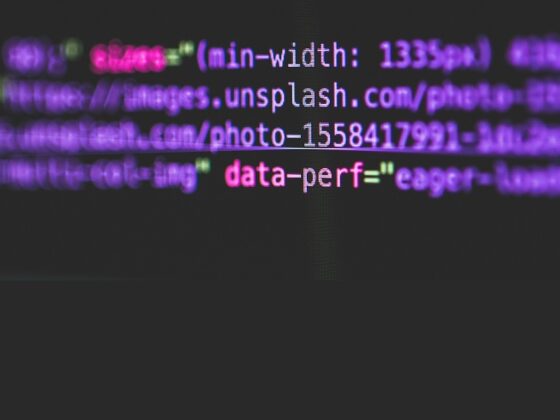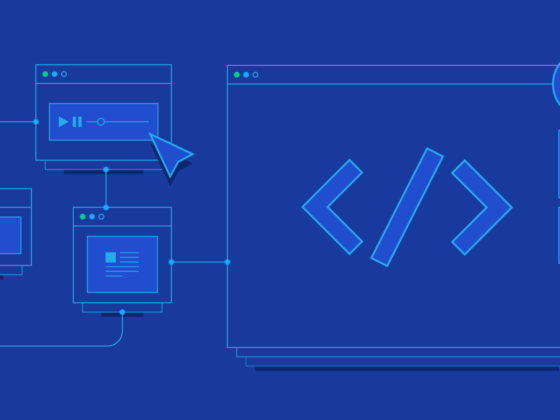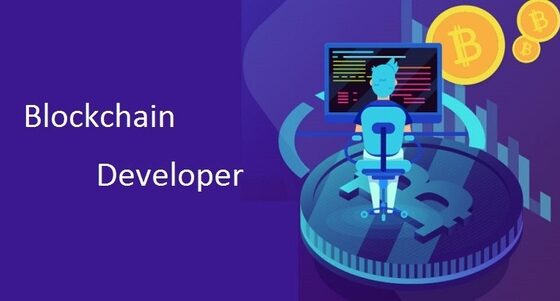Given the incredible interest in full-stack bootcamps lately, we decided to analyze this phenomenon and learn the reasons behind it.
Specifically, we looked at the demand for full-stack developers on the IT market, skills they get in bootcamps and if it’s enough for employment, and jobs/salaries they can get with a full-stack developer certificate in 2022.
Using data from the Bureau of Labor Statistics (BLS) and PayScale, with in-depth reviews of full-stack bootcamps’ programs and job guarantees, we uncovered some interesting findings.
Get ready to broaden your career horizons.
Who is a full-stack developer?
Surprisingly for 2022, the fact remains:
Many applicants choose full-stack development as their future career with no clear understanding of this role, skills and duties it presumes, and jobs they can get with a corresponding certificate.
They see reports saying a full-stack developer can earn about $101,050 per year, which is more than other related positions offer, and decide to give it a try.
Let’s dot all the i’s and cross all the t’s here:
A full-stack developer is a person who works with both client and server software, transitioning seamlessly between front-end and back-end coding. They are masters of multiple languages and are fluent in programming browsers, servers, and databases.
Knowledge and skills
The #1 challenge for full-stack developers is that this role is increasingly complex. They need to understand the how and why behind each functionality in a development project, switch between front- and back-end development whenever necessary, and stay up-to-date with new standards and upcoming technologies.
That’s what a full-stack developer knows:
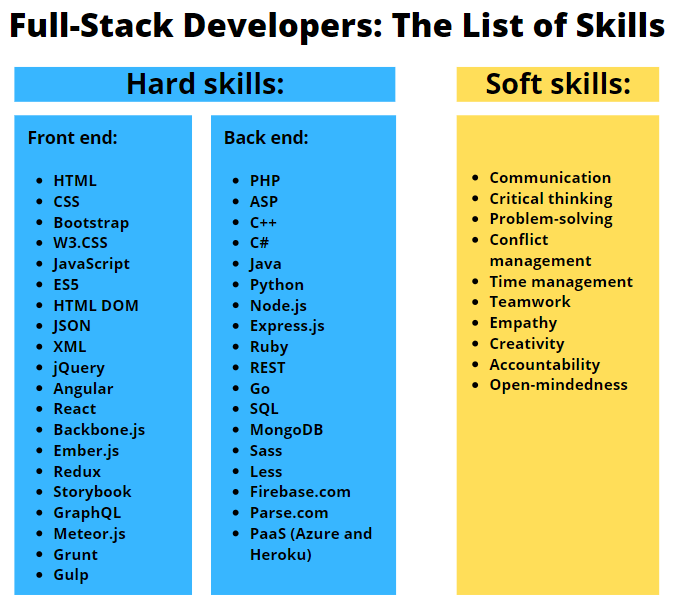
Okay, we can almost hear you crying, “How is it possible for a single specialist to handle ALL that?!”
Don’t let this list scare you!
The term “full-stack developer” comes from the early web days, when websites were simple enough for a single person to build. The web is much more complex now: artificial intelligence, predictive computing, machine learning, responsive design — all that makes it super challenging for one specialist to deal with every aspect of website/app building.
Today, a full-stack developer is an experienced generalist able to build an MVP (minimal viable product) with enough functionality for customers to use. Understanding the how’s and why’s behind the front- and back-end, these professionals spot errors between both disciplines and tackle all related tasks.
Roles and responsibilities
Those deciding to try on the suit of a full-stack developer, be ready to meet the following roles and responsibilities in job requirements:
- Concepting and building websites through the development lifecycle to launch
- Prototyping minimal viable products
- Coding for functionality across different platforms
- Developing applications, servers, and databases to support websites on the back end
- Designing interactions through frond-end architecture frameworks
- Developing APIs
- Leading the team of developers and creating the best practices for them
- Communicating with design teams to deliver the best product
- Managing databases and servers
- Troubleshooting issues
- Following the industry trends and applying them to a company’s needs
How much does a full-stack bootcamp graduate make?
That’s all well and fine, but what earnings can a specialist with a full-stack developer certificate expect?
It depends on a few factors: your skills, experience of working in the sphere, and your area of living.
A full-stack bootcamp graduate with no previous experience working at IT companies but in-depth knowledge of programming language and development stacks (APIs, frameworks, and data management tools) can expect $82,930 per year (based on the data from Indeed).
The highest-paying US cities for full-stack developers in 2022:
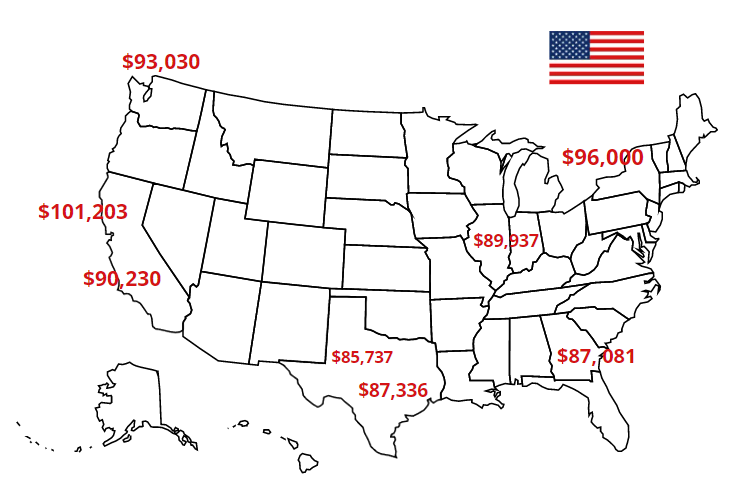
- $101,203 — San Francisco, CA
- $96,000 — New York, NY
- $93,030 — Seattle, WA
- $90,230 — Los Angeles, CA
- $89,937 — Chicago, IL
- $87,336 — Dallas, TX
- $87,081 — Atlanta, GA
- $85,737 — Austin, TX
The more experienced specialist you become, the higher salary you get. An average salary of a full-stack developer with 3-5 years of experience in the niche is $122,300 per year. San Francisco, LA, is among the highest paying cities for full-stack developers in the USA: They get around $123,220 per year there.
How to become a full-stack developer
Tons of opportunities to join the IT field appear in response to the market’s demand to solve the talent shortage: online courses, coding schools, and college degrees in Computer Science are just a few to consider. And while some employers may favor those with a certain level of education, most prefer judging a specialist by knowledge and skills, not a diploma.
It’s challenging, though possible, to get all the necessary skills through self-training. Low-cost online classes, books, and tutorials can help you learn the basics if you have enough time and discipline to dig into the details.
For those with no time or money to pursue a traditional four-year degree but the desire to start a career in full-stack development comes an option:
A full-stack bootcamp
A full-stack bootcamp is an intensive course giving you the theoretical knowledge and practical skills to land an entry-level job in the niche. It takes between 3-6 months to complete, preparing you for coding careers and networking with industry professionals.
With so many full-stack bootcamps on the market, it’s a complex problem to decide which one to join. Why not save time and get matched with your ideal school right now?
Get matched with a highest-rated coding bootcamp
Our community has spent years researching the most promising coding schools that lead to a bright future. Would you like to join one of the top-notch schools? Fill out this form to get matched.
Have got the results?
Now it’s time to find your school in the below list of the top full-stack bootcamps and learn more details on it.
The best full-stack bootcamps to consider:
| Location: | Format: | Duration: | Cost: | Employment rate: | |
| 4Geeks Academy | Miami and Orlando | online, in-person | 9-16 weeks | $7,499 (part-time) | 85% |
| Coding Temple | Boston, Chicago, Dallas | online | 10 weeks | $14,495 | 95% |
| Lambda | remote | online | 24 weeks | $15,000 | 73% |
| Nucamp | remote | online | 22 weeks | $2,328 | 78% |
| Fullstack Academy | New York | online, in-person | 13-28 weeks | $17,811 | 69% |
| Flatiron | Austin, Chicago, Houston, NYC, Seattle | online, in-person | 15 weeks | $16,900 | 86% |
| Tech Elevator | Chicago, Detroit, Dallas | online, in-person | 14 wees | $15,950 | 90% |
| True Coders | Birmingham | online | 8-24 weeks | $6,500 | 73% |
| App Academy | NYC, San Francisco | online, in-person | 24 weeks | $17,000 | 95% |
| Codesmith | Los Angeles, NYC | online | 12-38 weeks | $19,350 | 74% |
If you don’t see your coding bootcamp in this table, you can check the advanced list of the top full-stack bootcamps here: 50 Best Full-Stack Bootcamps 2021-2022.
How to pay for full-stack bootcamp
Upfront payment isn’t the only option when it comes to bootcamps. Trying to be affordable, they are super flexible and provide numerous variants to pay for their services:
- Scholarships: Many bootcamps provide scholarships for specific cohorts from time to time to make education more accessible.
- Early enrollment discounts: Some bootcamps offer significant discounts for those applicants who enroll long before a course begins.
- ISA (Income Share Agreement): You pay some deposit up front and then defer the remaining tuition after you start working post-program.
- Deferred payment: You pay some deposit up front, and a bootcamp later generates revenue by taking a percent of your first year’s salary.
- External loans: Climb Credit, Skills Fund, and other lenders partner with bootcamps, providing loans for their applicants.
- Partnership programs: Some bootcamps partner with universities, organizations, or city governments to provide full-tuition scholarships for eligible applicants.
- Employer sponsorship: If you’re a working person willing to upgrade professional skills and your employer has a budget for employee training, it can be your opportunity to pay for full-stack bootcamps.
- Crowdfunding: You can ask other people to give you money for a bootcamp. Platforms like GoFundMe or IndieGoGo may help.
- Free options: Some bootcamps offer free prep courses for applicants so they can decide if full-stack development is right for them.
Contact your chosen bootcamp and ask what payment options they have. Examine all the terms and conditions carefully to get the most out of your learning experience in the school.
A college degree
This option is a longer and more expensive one to consider for becoming a full-stack developer:
Almost a half (49,3% in 2020) of specialists in the niche have a minimum Bachelor’s degree in Computer Science, Web Development, or Programming. In college, they get both theoretical and practical in-depth knowledge and build an extensive network with industry experts and potential employers.
At the same time, far from all professional developers consider formal education “a must” for a successful IT career. Only 26% believe it’s “very important” to have higher education, and 23% say it’s “somewhat important.”
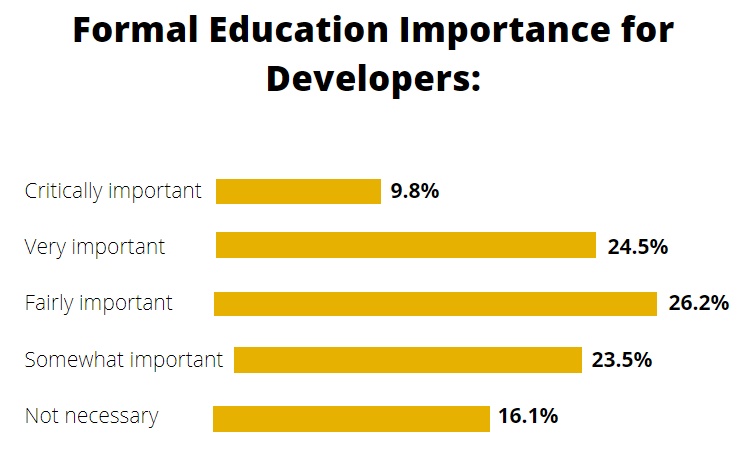
That said, full-stack developers with no college degree but impressive portfolios and solid references can also be highly competitive candidates.
What is covered in a full-stack web development bootcamp?
A full-stack bootcamp is a short-term program, so be ready to learn the fundamentals of programming languages and development stacks.
You’ll get basic skills, frameworks, tools, and principles for entry-level positions in the niche. While other bootcamps focus on broader areas such as data science, cybersecurity, or even digital marketing, full-stack schools help you build tech skills for working in software or web development.
Full-stack bootcamps also focus on practice. Not only do students learn APIs, web frameworks, and data management tools there, but they also work on hands-on projects to add to their portfolio and strengthen their soft skills.
Some of the most common skills you’ll acquire in full-stack bootcamps include:
1) Programming languages: A professional developer knows Java, PHP, Python, or others. Sure thing, you can’t be proficient in all programming languages at once, so you need to decide which one to choose and consider entering a bootcamp that will teach it.
To ease this choice for you, we have this short yet accurate quiz that helps find the most suitable programming language for you:
What coding language is best for you?
We crafted this test to help learners find the right programming language. Just pick your own goals and preferences.
Best part? The test will take under a minute only!
2) Pair programming: You’ll learn how to work with another developer at one workstation. This agile software development technique allows the creation of higher-quality code with fewer bugs.
3) Testing: You’ll know how to test code both manually and automatically and how to write the syntax for solving detected problems.
4) Problem-solving: It’s a core skill for full-stack developers; they should understand how the human brain thinks and solves problems to translate that process into a computer algorithm.
5) UX principles: Full-stack developers work closely with design teams to deliver the best possible product. It’s critical for them to understand user experience principles to craft their work accordingly.
Jobs you can get with a full-stack developer certificate
The Bureau of Labor Statistics makes it clear:
The demand for computer and IT occupations will grow 13% from 2020 to 2030, faster than in other niches. We’ll get around 667,600 new jobs paying a median annual salary of $97,430, which is (again!) higher than the median wage of other areas ($45,760).
That’s when your full-stack developer certificate comes in handy, huh?
Additional Read: Online Certificates and Diplomas: Do Employers Take Them Seriously?
Demand for IT specialists stems from the emphasis on cloud computing, information security, and big data collection and storage. With a college diploma or bootcamp certificate in full-stack development, you can begin a career path as:
| Who | Duties | Average salary, $ per year |
| Computer Programmer | Write code to generate programs | 89,190 |
| Security Analyst | Protect networks from cyberattacks | 103,590 |
| Software Engineer | Design and unify software creation | 87,690 |
| Software Developer | Manage the creation of computer programs | 110,140 |
| Web Developer | Plan and produce websites | 77,200 |
Still in doubt if full-stack development is right for you?
With the IT industry on the rise, having a developer certificate is a big plus. Whether you get it in college or through online courses and coding bootcamps, it will be your ticket to a brave new world of emerging technologies, AI growth, and a human’s place in it.
Why full-stack development?
It allows you to see the whole picture of these rapid changes. By transitioning between front- and back-end coding, you can see things from both client and machine’s perspectives and participate in building the history of tomorrow. Doesn’t that sound like magic?


